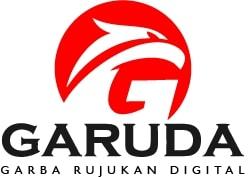Formulation and Production of Eco-Enzyme Herbal Bath Soap as a Natural Antiseptic
Abstract
This study aimed to develop herbal bath soap formulations based on eco enzyme and evaluate their physical characteristics according to SNI quality standards. The soap was formulated using the Cold Process method with three formula variations: F0, F1, and F2. The pH test results showed that all formulas were within the range of 9.03–9.05, meeting the SNI standard. The moisture content test showed the lowest value in F0 and the highest in F2, all of which were within the SNI standard. The total fat of the formulas ranged from 45.005% to 52.815%, meeting the maximum limit of the SNI. The free alkali values of all formulas ranged from 0.0095% to 0.0949%, in accordance with the SNI standard. Formula F2 was considered the best formulation because it produced soap with optimal physical characteristics and met all standard parameters. Eco enzyme has been proven effective as an active ingredient with potential antifungal, antibacterial, and natural cleansing properties in herbal bath soap formulations.
References
Agustina, U. and Iskandar Hakim, M. (2023) ‘Uji Organoleptik Dan Mikrobiologi Classic Enzim Belimbing Wuluh (Averrhoa bilimbi L.)’, Indobiosains, 5(2), pp. 66–80. Available at: https://doi.org/10.31851/indobiosains.v5i2.11140.
Djoru, M.R.B. and Neonufa, G.F. (2023) ‘Pelatihan Pembuatan Sabun Cair Dan Sabun Padat Berbasis Minyak Atsiri Pada Siswa Smk Pertanian Pembangunan Negeri Kupang’, SWARNA: Jurnal Pengabdian Kepada Masyarakat, 2(5), pp. 510–515. Available at: https://doi.org/10.55681/swarna.v2i5.519.
Fatkhurrachman, F. et al. (2023) ‘Liquid Soap with Active Ingredients of Methanol Extract of Sambang Darah Leaves (Excoecaria cochinchinensis L.): Formulation, Characterization, and Antibacterial Activity’, Stannum : Jurnal Sains dan Terapan Kimia, 5(1), pp. 15–23. Available at: https://doi.org/10.33019/jstk.v5i1.3845.
Hidayat, M.R. et al. (2023) ‘Pemanfaatan Eco-Enzyme Dalam Kegiatan Praktik Belajar Lapangan Kepada Masyarakat’, JMM (Jurnal Masyarakat Mandiri), 7(2), p. 1435. Available at: https://doi.org/10.31764/jmm.v7i2.13665.
Hidayati, N. et al. (2023) ‘Peningkatan Kapasitas Produksi Sabun Pakaian Untuk Meningkatkan Ekonomi Masyarakat Pasca Pandemic Covid-19 Kelurahan Jatimulya Cilodong’, Mitra Akademia: Jurnal Pengabdian Masyarakat, 6(1), pp. 321–326. Available at: https://doi.org/10.32722/mapnj.v6i1.5584.
Ningsih, W., Agustin, D. and Sefrianti, P. (2019) ‘FORMULASI SABUN PEMBERSIH KEWANITAAN (Feminime Hygiene) DARI MINYAK ATSIRI RIMPANG LENGKUAS PUTIH (Alpinia galanga L) DAN UJI AKTIFITAS ANTISEPTIK TERHADAP Candida albicans’, JIFFK : Jurnal Ilmu Farmasi dan Farmasi Klinik, 16(01), p. 51. Available at: https://doi.org/10.31942/jiffk.v16i01.2929.
Rahayu, S.A. et al. (2023) ‘Antibacterial Activity Test of Herbal and Non Herbal Bar Soap Against The Growth of Staphylococcus aureus ATCC29213’, Indonesian Journal of Pharmaceutical Science and Technology Journal Homepage, 5(2), pp. 146–151. Available at: http://jurnal.unpad.ac.id/ijpst/.
Sari, R. and Ferdinan, A. (2017) ‘Pengujian Aktivitas Antibakteri Sabun Cair dari Ekstrak Kulit Daun Lidah Buaya Antibacterial’, Pharm Sci Res, 4(3), pp. 111–120.
Sartika, D., Patappari, A. and Syarif, A. (2021) ‘Penyuluhan Dan Pelatihan Pembuatan Sabun Herbal Alami (Inovasi Produk Kreatif Millenial for Entrepreneur)’, Jurnal Abdimas Indonesia, 1(4), pp. 10–18. Available at: https://doi.org/10.53769/jai.v1i4.138.
Vama, L. and Cherekar, M.N. (2020) ‘Production, Extraction and Uses of Eco-Enzyme Using Citrus Fruit Waste: Wealth From Waste’, Biotech. Env. Sc, 22(2), pp. 2020–346.
Copyright (c) 2025 Muhammad Tahir

This work is licensed under a Creative Commons Attribution 4.0 International License.










